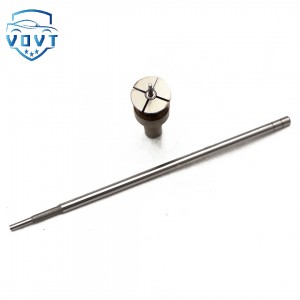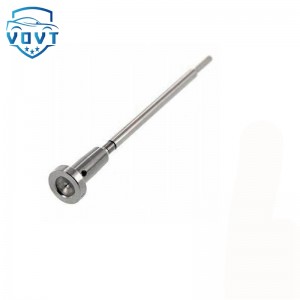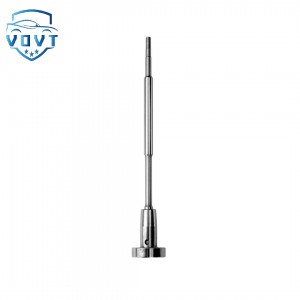High Precision New Diesel Injector Control Valve F00VC01033 Valve Assembly for Fuel Injector Engine Spare Parts
Products Description
| Reference Codes | F00VC01033 |
| Application | / |
| MOQ | 6 PCS |
| Certification | ISO9001 |
| Place of Origin | China |
| Packaging | Neutral packing |
| Quality Control | 100% tested before shipment |
| Lead time | 7~10 working days |
| Payment | T/T, L/C, Paypal, Western Union, MoneyGram or as your requirement |
Injector valve assembly
The injector valve assembly is the core actuator of the injector, and its performance directly affects the accuracy of fuel injection, atomization effect and engine operating status. According to different structures and functions, it can achieve the following key functions, and there are corresponding treatment methods in maintenance:
1. The core function of the injector valve assembly
Precisely control fuel injection
Through the cooperation of the valve core (needle valve) and the valve seat, it can quickly open/close under the action of electromagnetic force or piezoelectric crystal driving force, accurately control the injection time, pulse width (injection amount) and injection number (such as multi-stage injection), and adapt to different engine working conditions (idling, acceleration, high speed, etc.).
For example, in the high-pressure common rail system of a diesel engine, the valve assembly can realize pre-injection, main injection and post-injection, reducing noise and emissions.
Ensure fuel sealing and atomization
When closed, the conical sealing structure of the valve core and the valve seat prevents fuel leakage, ensuring that the fuel is sprayed only from the spray hole under high pressure; when opened, the high-pressure fuel forms a uniform mist beam through the spray hole and is fully mixed with the air.
If the seal fails (such as conical surface wear), it will cause dripping, poor atomization, and cause carbon deposits in the engine and reduced power.
Withstand high pressure and high frequency work
Modern injector valve components need to withstand extremely high pressure (diesel engines can reach more than 2000bar) and high-frequency actions (tens of thousands of times per minute). Its material (such as high-speed steel, ceramic) and precision machining (matching clearance micrometer level) determine its durability.
2. Maintenance and treatment of injector valve components
Situations where cleaning and repair can be performed
If the valve core is stuck and the sealing surface is slightly contaminated due to carbon deposits (fuel impurities or incomplete combustion products), ultrasonic cleaning (special cleaning agent, frequency 20-40kHz) can be used to remove carbon deposits and restore activity accuracy and sealing.
After cleaning, the sealing and spray effect need to be retested to confirm whether they meet the standards.
Situations requiring replacement
When the following irreversible damage occurs, the valve assembly must be replaced (usually the needle valve pair is replaced as a whole):
The valve core/valve seat sealing cone is worn, scratched, or pitted (resulting in poor sealing and excessive pressure drop);
The clearance between the valve core and the valve sleeve is too large (exceeding 0.005mm, resulting in excessive oil return);
Spring elastic force attenuation (the valve core reset speed cannot be guaranteed, affecting injection accuracy);
The electromagnetic coil or piezoelectric crystal is damaged (electrical performance failure).
Assembly and calibration requirements
After replacing the valve assembly, it is necessary to tighten the torque according to the manufacturer's specifications (such as the valve cap tightening torque 20-30N・m), and calibrate the injection amount and injection timing through the test bench to ensure that it matches the engine.





















